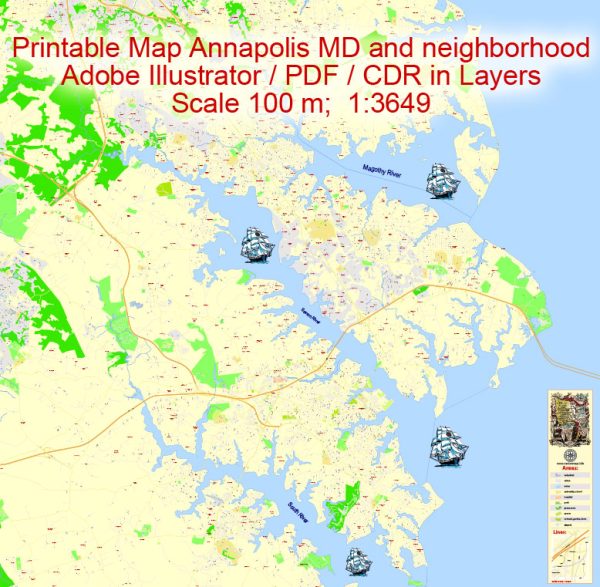Annapolis, Maryland, holds a significant place in American history, and its rich heritage is reflected in its historic sites and contributions to the nation’s development. Here is a brief description of Annapolis’s role in U.S. history:
- Colonial Era: Annapolis was founded in 1649 and served as the capital of Maryland from 1694 to 1783. It was a hub for early colonial activities and played a key role in the establishment of religious freedom with the 1649 Maryland Toleration Act.
- American Revolution: During the American Revolution, Annapolis was a hub of political activity. It hosted the Annapolis Convention in 1786, where delegates from five states gathered to discuss issues with the Articles of Confederation, ultimately leading to the drafting of the United States Constitution.
- United States Naval Academy: Annapolis is home to the United States Naval Academy, established in 1845. This prestigious institution has been instrumental in training naval officers, shaping U.S. maritime history, and contributing to national defense.
- War of 1812: In the War of 1812, Annapolis played a strategic role as a naval and military center. Fort Severn, part of the city’s defenses, is a testament to this period.
- Civil War: Although Annapolis remained under Union control during the Civil War, the city was a key center for the transportation of troops and supplies. It also served as a hospital for wounded soldiers.
- Historic District: Annapolis’s historic district is home to numerous well-preserved 18th-century buildings. The Maryland State House, built in 1772, is the oldest state capitol still in continuous legislative use. It was the site of George Washington’s resignation from the Continental Army and the ratification of the Treaty of Paris, which ended the Revolutionary War.
- African American History: Annapolis has a rich African American heritage. The Banneker-Douglass Museum, named after Benjamin Banneker and Frederick Douglass, celebrates the contributions of African Americans in Maryland and the nation.
- Maritime Heritage: Annapolis’s maritime history is celebrated at the Annapolis Maritime Museum and through the city’s vibrant waterfront. The area was a center for boatbuilding, seafood processing, and commerce.
- Modern Government: Today, Annapolis is the state capital of Maryland and serves as the seat of state government. It is known for its picturesque historic waterfront, vibrant downtown area, and a diverse cultural scene.
Annapolis, Maryland, is a city deeply intertwined with the history of the United States, from its colonial roots to its role in the founding of the nation and its continued significance as the state capital. Visitors can explore its historic sites, museums, and waterfront, experiencing the legacy of this charming and historically significant city.


 Author: Kirill Shrayber, Ph.D.
Author: Kirill Shrayber, Ph.D.